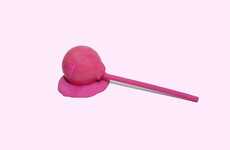
Casey Baugh Illustrates Images That Look Real & Fake Simultaneously
Jason Soy — February 27, 2012 — Art & Design
References: caseybaughfineart & cuded
These Casey Baugh illustrations are among the most photoreal paintings I’ve ever seen, but fidelity to realism isn’t the only thing that makes Baugh’s work stand out.
Despite looking identical to photographs, viewers can still distinctly tell the images were produced using a brush. Somehow, Baugh’s able to retain a painterly quality to his work while capturing every nuance of his references. It leaves audiences in an awkward space as their eyes are telling them what they’re seeing is both a camera-produced picture and an oil rendering.
Casey Baugh is an American artist who studied web design before switching over to painting these breathtaking and technical portraits. He’s been a finalist in many competitions across the country, and currently teaches his masterful technique to students who are trying to emulate his work.
Despite looking identical to photographs, viewers can still distinctly tell the images were produced using a brush. Somehow, Baugh’s able to retain a painterly quality to his work while capturing every nuance of his references. It leaves audiences in an awkward space as their eyes are telling them what they’re seeing is both a camera-produced picture and an oil rendering.
Casey Baugh is an American artist who studied web design before switching over to painting these breathtaking and technical portraits. He’s been a finalist in many competitions across the country, and currently teaches his masterful technique to students who are trying to emulate his work.
Trend Themes
1. Photorealistic Illustration - Explore the trend of creating illustrations that closely resemble photographs, blurring the line between reality and art.
2. Painterly Realism - Discover the trend of retaining a painterly quality in artwork while achieving a high level of realism, creating a unique visual experience.
3. Hyperrealistic Techniques - Learn about the trend of using advanced techniques to meticulously capture every detail in artwork, resulting in incredibly lifelike images.
Industry Implications
1. Fine Arts - The fine arts industry can benefit from the photorealistic illustration trend by attracting a wider audience interested in both traditional and contemporary artwork.
2. Web Design - The web design industry can explore the use of painterly realism techniques to create visually striking websites that bridge the gap between photography and digital art.
3. Art Education - Art education can incorporate hyperrealistic techniques into the curriculum to teach students about the possibilities of blending traditional and contemporary art mediums.
5
Score
Popularity
Activity
Freshness























